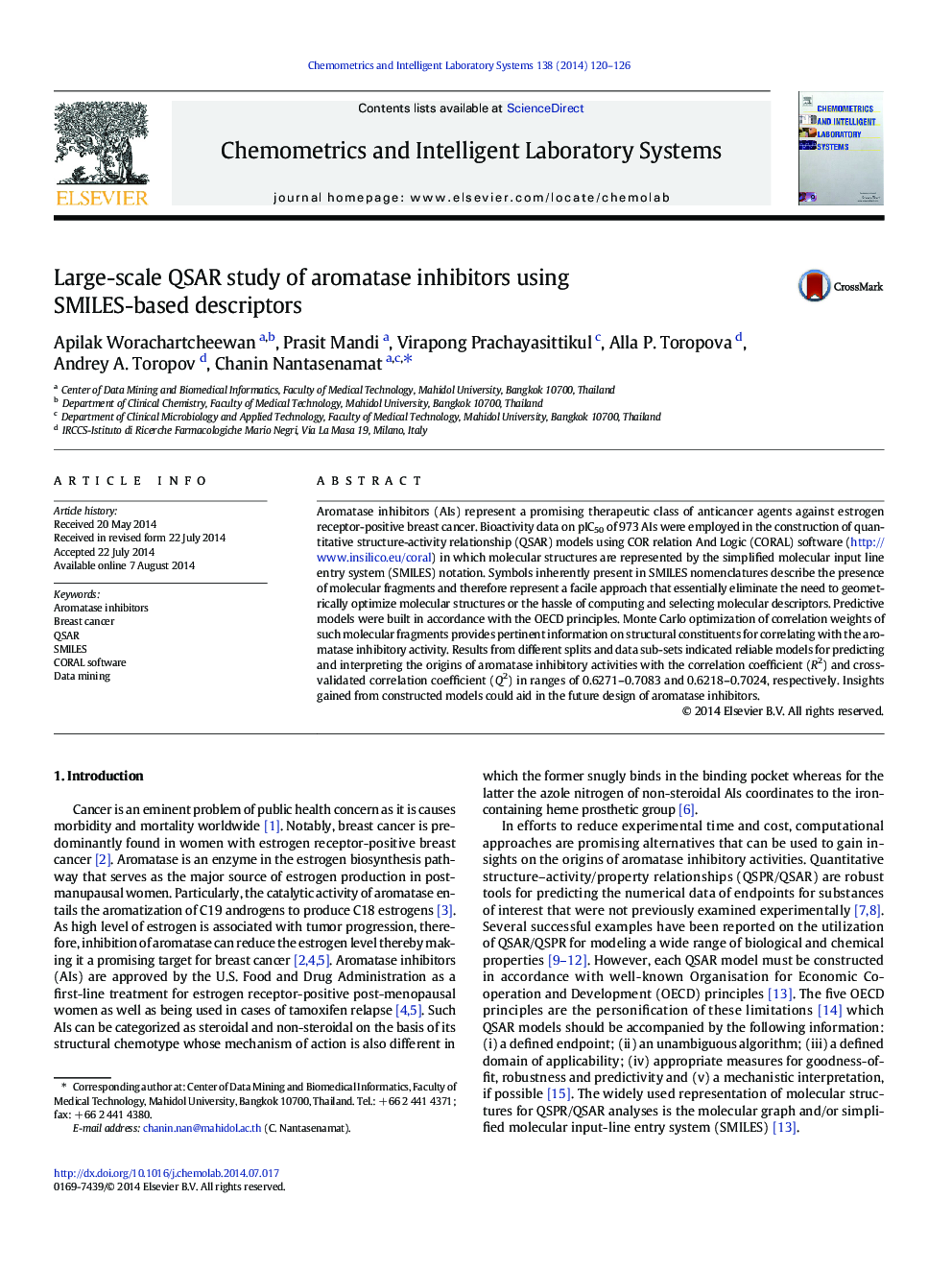| Article ID | Journal | Published Year | Pages | File Type |
|---|---|---|---|---|
| 1180739 | Chemometrics and Intelligent Laboratory Systems | 2014 | 7 Pages |
•QSAR modeling was applied for probing origins of aromatase inhibitory activities•Molecular features extracted from SMILES notation were used as descriptors•Models were built via Monte Carlo using various splits of data•Model robustness was verified by several metrics•Models provide mechanistic interpretation on promoters of pIC50 increase/decrease
Aromatase inhibitors (AIs) represent a promising therapeutic class of anticancer agents against estrogen receptor-positive breast cancer. Bioactivity data on pIC50 of 973 AIs were employed in the construction of quantitative structure-activity relationship (QSAR) models using COR relation And Logic (CORAL) software (http://www.insilico.eu/coral) in which molecular structures are represented by the simplified molecular input line entry system (SMILES) notation. Symbols inherently present in SMILES nomenclatures describe the presence of molecular fragments and therefore represent a facile approach that essentially eliminate the need to geometrically optimize molecular structures or the hassle of computing and selecting molecular descriptors. Predictive models were built in accordance with the OECD principles. Monte Carlo optimization of correlation weights of such molecular fragments provides pertinent information on structural constituents for correlating with the aromatase inhibitory activity. Results from different splits and data sub-sets indicated reliable models for predicting and interpreting the origins of aromatase inhibitory activities with the correlation coefficient (R2) and cross-validated correlation coefficient (Q2) in ranges of 0.6271–0.7083 and 0.6218–0.7024, respectively. Insights gained from constructed models could aid in the future design of aromatase inhibitors.
